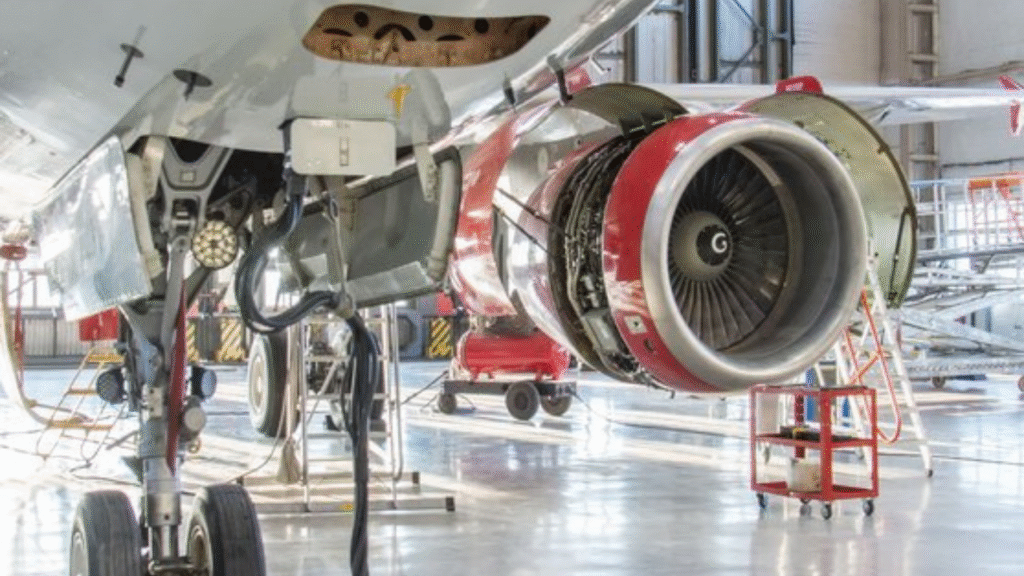Aerospace and Defense Innovation Pioneers
The aerospace and defense industry is an enormous and ever changing ecosystem that few have left as an indelible mark as Universal Technology Corporation (UTC). The company was founded in 1961 in Dayton, Ohio as Wright Paten Patterson Air Force Base and a military and aerospace research hub, and based upon the original vision of speeding the advance of technologies in the support of national defense and security and aerospace progress. Over the almost 60 years of existence, the company was a strategic partner of some of the most important government bodies of the United States such as the Air Force Research Laboratory (AFRL), NASA, and the Department of Defense (DoD). Staffed with renowned scientists, engineers and defense experts, UTC developed a reputation as an organization going to market with a solution at hand and proficient at transferring bleeding-edge notions into useful technologies devoted to operations. The company later incorporated into the present-day ARCTOS Technology Solutions, but with a legacy of innovativeness and superior impact on the development of defense technology, its mark permanently pervades the industry writ today.
Origin and Early Hard Traveling
The Universal Technology Corporation emerged at the time when requirements of the Cold War dictated fast technological change in military and aerospace capabilities. Since its beginning, the mission of the company remained simple: to serve the customers in the government, employing applied research and development to assist them, and provide the next generation of the engineering solutions that could offset the new threats and complex system requirements. In the early days, UTC concentrated its research in aerospace systems and materials-based work-the foundation of a multi-disciplinary company. In the 1980s and 1990s, the company had diversified to other aspects including thermal and structural analysis, propulsion systems, materials characterization and systems integration.
The fact that the Wright-Patterson Air Force Base, most notably the AFRL, had a strong connection with the company gave it a strategic standing to make contributions to defense innovation on the highest echelons. The continued engineering and research support to the other ongoing military programs frequently required fast-turnaround engineering and research available through UTC; indeed, UTC was called to serve on everything, including aircraft survivability studies all the way to space and satellite systems building. This conformity to the national defence needs allowed UTC to increase in size, coverage as well as technical regard.
A variety of Experiences in Aerospace and Engineering Fields
The power of the organization of UTC was in the convergence of technical capacities of the organization in various domains essential in the field of defense and commercial sectors of aerospace sphere. It was taking part in the development of the advanced flight systems, unmanned aerial vehicles (UAVs), propulsion mechanisms, and aircraft maintenance technologies, which was one of its strongest points in the field of aerospace systems. These solutions were not only in support of physical mediums of defense work but also supporting the analytical capabilities to determine performance and readiness in the real-world environment.

Materials science and manufacturing was another large field of knowledge. UTC engineers and researchers had developed such capabilities as lightweight composite materials, high-temperature metals and corrosion-resistant coatings that were critical to next-generation aircrafts and space systems. These inventions assisted in enhancement of fuel consumption, durability and the overall mission capacity. The company was also strongly enrolled in additive manufacturing (3D printing) where they went beyond experimenting to challenge the design of other critical parts in aircrafts to be designed, prototyped and manufactured through this efficient and cheaper technique.
In addition to aerospace hardware, UTC played a major role in civil as well as defense infrastructure engineering. This was in addition to development of agile airbase technologies, runway reinforcement, logistic facilities and some systems that allowed the Rapid Military Deployment. Its space and directed energy technologies were also developed by the company, which conducted studies about high-energy laser systems, communications using satellites, and space vehicle survivability- all of which are gaining greater applicability and importance in the current fast-advancing space environment.
Government Contracts and Projects of Strategies
The high profile of UTC in the defense R&D community included the company being involved in various projects that were given very large government contracts. One of the most notable was a contract worth 24.5 million dollars with the AFRL under the Short-Term Aerospace Research and Development Program (STAR-DP) where in the company was contracted to help with various research and analyses requirements in Air Vehicles Directorate. This contract has served as an example of how UTC is flexible and reacts to conditions in its ability to provide high-value solutions within torn time frames.
A further landmark project was a 44 million dollar award in the Structures Engineering Research (SER) program. This constituted multi-agency interaction of which UTC contributed in the engineering of improved structural materials and design methods to enhance survivability, efficiency and maintainability of the aerospace vehicles. Some of the partners that the company closely collaborated with to deliver the technical and logistical aspects of these complex contracts included the University of Dayton Research Institute and Booz Allen Hamilton.
Such projects did not only advance the technical credibility of UTC but also put it to the forefront of strategic significance both in the planning and innovation of the national defense.
READ MORE Master Evony with Evonygalore
AC and ARMA merger: Creation of the ARCTOS
September 2019 marked the beginning of a new chapter in the history of Universal Technology Corporation by welcoming two new partners in the course of the strategic merger with Advanced Core Concepts (ACC) and ARMA Aviation, which are also defense-oriented companies. This merger has saw the creation of ARCTOS Technology Solutions, a combined company that was structured to offer a full lifecycle support with respect to the clients in the defense, intelligence, and the space. The merger was to combine the finest attributes of both firms- the R&D expertise of UTC, mission software and space systems expertise of ACC, and the aviation logistics expertise of ARMA.
Following the merger, Trase Travers, a former ACC CEO, became the Chief Executive Officer of ARCTOS whilst Joe Sciabica, who was the UTC CEO, changed his portfolio to the Chief Technology Officer. Collectively, they strived to improve the capacity of the organization and provide service based on a coherent set of innovation-driven practices that would address the growing sophistication of warfare and aerospace missions.
The creation of ARCTOS was not a strategic retreat, a retreat in the strength of the values of UTC, but a strategic shift in terms of the, if you will, more integrated mission support. Today, ARCTOS is still in business, providing services to U.S. Air Force, NASA, the Army Futures Command and Missile Defense Agency.
Promoting modern Innovation
The living legacy of the Universal Technology Corporation still continues to influence the technological foundation of the American aerospace and defense with naval aviation frameworks through the evolution of ARCTOS. Since then, ARCTOS has two business units namely Technology Solutions where most of the original R&D and engineering strength UTC had is based, and Mission Solutions that focuses on operational readiness, software development and sustaining systems.
Application of advanced simulation and digital engineering tools with the company is one of the current focal points of the company and would allow the company clients to visualize intricate systems and base their decisions on data. These skills are necessary in future operation planning strategy, assessment of risks and cost mitigation in the long-term procurement of the military.
The other sphere in which UTC had been engaged in a wide range of research involves space domain awareness. The interest of militaries in the sphere of space is constantly growing, and ARCTOS is currently investigating means of technological advancement to guarantee satellite networks, communication security, and responsive launch capabilities.
In addition, the company is one step ahead in cyber-physical systems and ensures that the aerospace embedded hardware is not only technically acclaimed but also defense against electronic warfare attacks.
Final conclusion: Longevity in Aerospace and Defense.
The history of Universal Technology Corporation can be described as an act of vision, survival and scientific prowess. UTC has assisted in the development of underpinnings of technology that are currently used in the development of national security with over decades of service in the aerospace industry and with the U.S. government. UTC invention ranged to high temperature materials, next-generation flight systems and space vehicle engineering to create the foundation of aerospace defense in the time to come.
Within the ARCTOS Technology Solutions, the legacy the company has built is not only preserved but continues to develop, and a new emphasis in multidisciplinary integration and longevity of mission success is set. Universal Technology Corporation has been a sign of innovation to its stakeholders in defense, space, and engineering sectors who strongly believe in the company with its long-standing interest in defending the country and appearing to aerospace frontiers.

